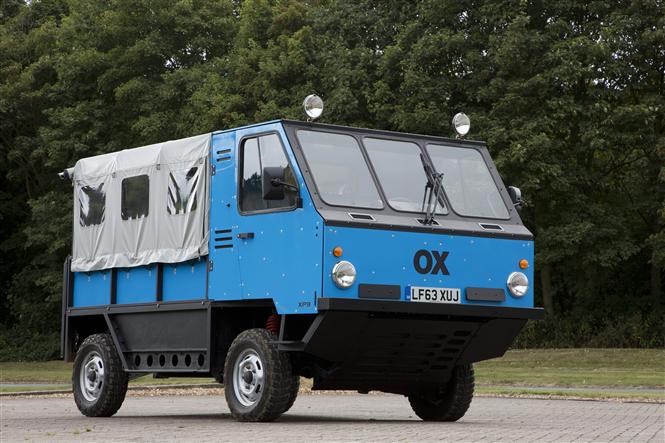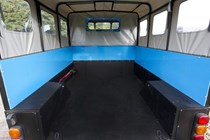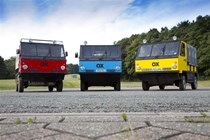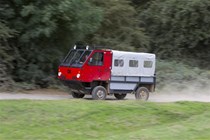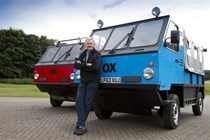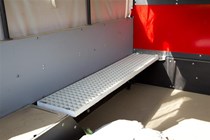This might look like something that’s escaped from a bad 1970s sci-fi film and based on a Mini Moke, but it is in fact the brand new OX flat-pack truck, and an entirely serious attempt to provide a versatile, cost-efficient mobility solution for the developing world.
And if you think it looks a bit funny, consider this: it comes as a flat-pack kit stored within itself, has a greater payload than any pickup on sale in the UK, and takes just 12 hours for three people to assemble.
Oh, and it’s also got a central driving position, just like the famous McLaren F1 supercar…
That’s a lot to take in – first things first, what’s the point of the OX truck, and who is behind it?
The idea is the brainchild of Sir Torquil Norman (below left), who founded the Global Vehicle Trust (GVT) in 2011 in order to “pursue his ambition to help people in the developing world by providing cost-effective mobility,” influenced by the “Africar” project of 1980.
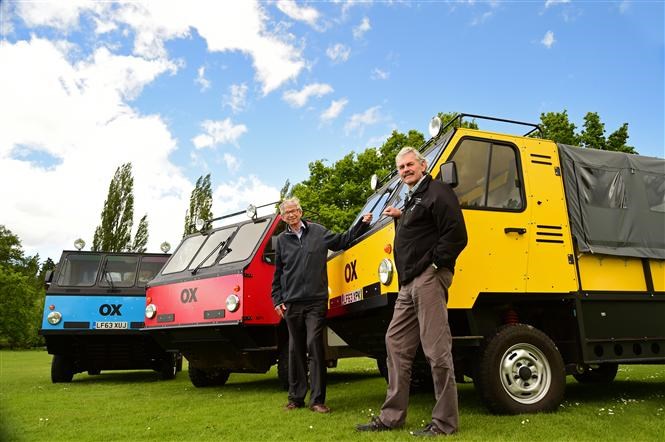
The GVT then got Professor Gordon Murray (above right) involved to design the thing.
Who’s Gordon Murray when he’s at home?
Prof Murray is a highly respected car designer who made his name in Formula One before going on to help McLaren create the F1 supercar – still widely regarded as one of, if not the, finest four-wheeled performance machine to ever grace the Earth.
These days he’s more interested in coming up with innovative transport solutions – by which we mean vehicles that are efficient in both driving terms and their construction. Which brings us back to the OX…
So what can the OX truck do?
The OX truck is designed to be a tough workhorse, capable of meeting the transportation challenges of Africa and other areas of the developing world. It can carry people, water, building supplies – anything – and do so across a wide range of surfaces and terrains.
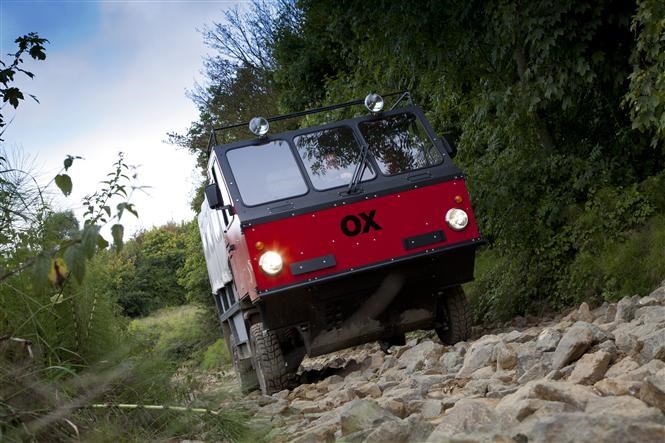
As such it has high ground clearance, a large amount of wheel travel and short overhangs for good approach and departure angles. At 4,229mm in length it’s shorter than your average family SUV, but a chunky 2,070mm wide; the driver sits in the middle of the three-person front bench seat, making it suitable for all countries, no matter which side of the road they drive on.
It has a cubic cargo capacity of 3,420 litres to the loadbed sides, or 7,000 litres when packed to the roof. But most impressive of all is the payload, which is rated at 1.9 tonnes. The OX truck has a dry weight (that’s without oil, fuel and other fluids) of 1.6 tonnes.
Sounds clever…
It is. For example, you can remove the tailgate and use it lengthways as a loading ramp, while the “egg crate” rear seat frames also double as “sand ladders” to help the OX gain traction on soft ground.
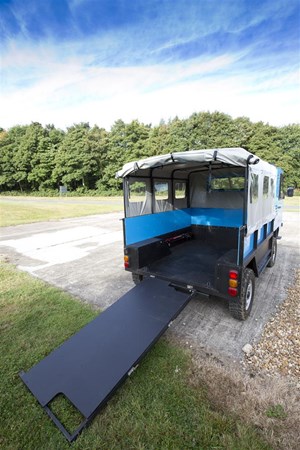
Murray has also designed it so that the kit can be packaged within the OX truck’s largest exterior components. The kit take six hours to prepare in the UK, and six kits fit neatly in a 40ft high-cube shipping container; the idea is that local companies in Africa will then employ people to assemble the vehicles – and maintain them.
What powers the OX truck – and is it four-wheel drive?
The prototypes use a 2.2-litre diesel engine, which produces 100hp and 310Nm. Hopefully it’s quite a simple engine, as modern diesels are very sensitive to the quality of fuel. Which isn’t always great in remote places.
There’s a five-speed gearbox, but the OX truck is only two-wheel drive – it’s still said to be highly capable off-road however, as it will often need to be for its intended customers. Extenstive testing has already been carried out in the UK.
What’s next for the OX truck?
That’s the big question, really. The OX has been unveiled and shown as a selection of working prototypes, and we’re told feedback from “contacts in Africa and with aid agencies has been very positive.” But as yet it isn’t confirmed for production, and GVT is still searching for potential backers.
Sir Torquil Norman said: “Our priority now is to raise the funding to complete the testing and take the project to fruition. We believe that the OX has huge potential for charities, aid organisations and development programmes. My dream is to one day see an OX in every village in Africa.”
Just so you know, we may receive a commission or other compensation from the links on this website - read why you should trust us.


